7 of the most challenging airports around the world for airline pilots to take off and land at
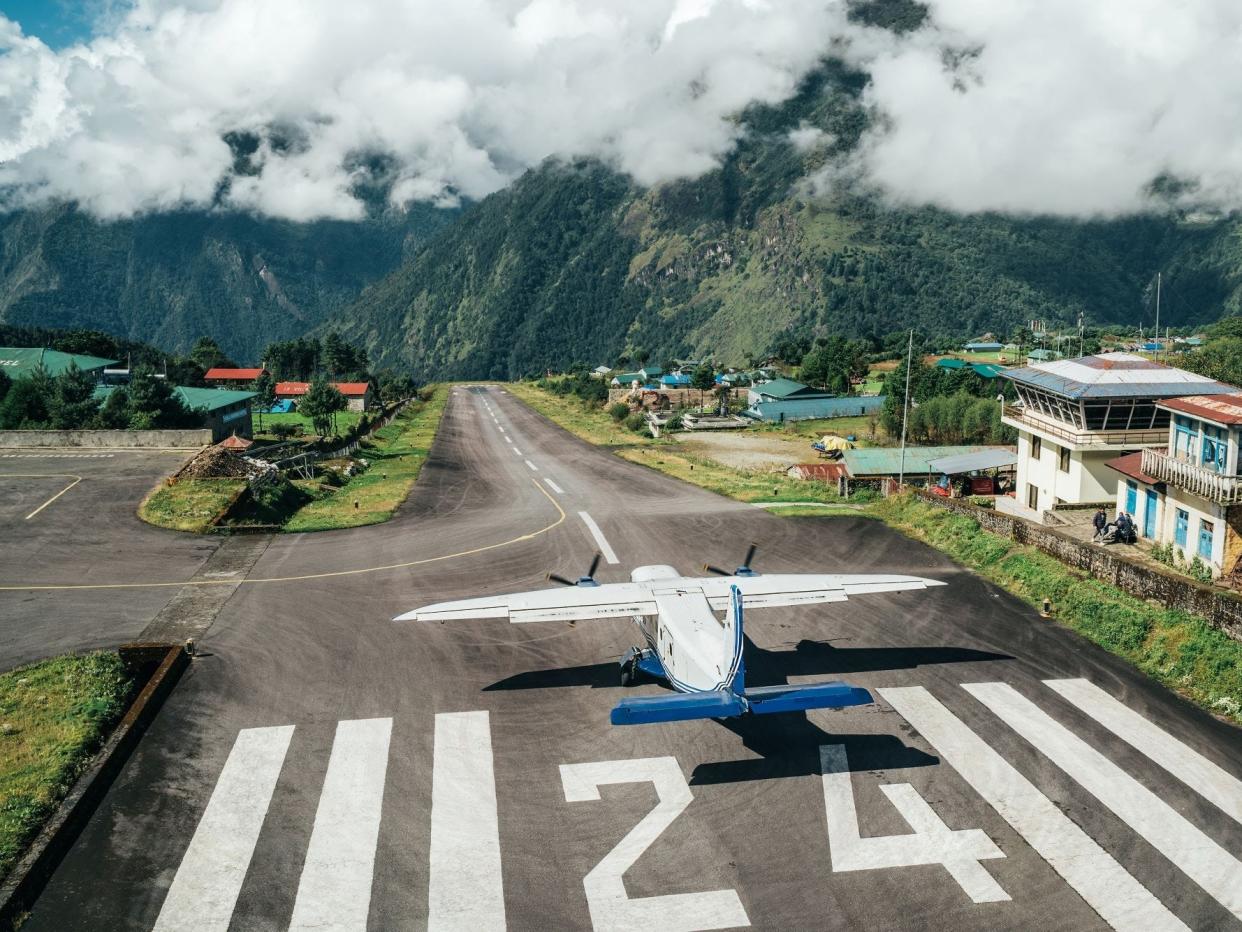
Flying is the safest mode of transportation, but some airports are more dangerous than others.
Mountains, unpredictable weather, short runways, and poor infrastructure can make flying more difficult.
A few airports are so challenging that they restrict flying to only a select number of skilled pilots.
Sometimes, it's okay to clap when a plane lands.
Despite the common fear of flying, air travel is the safest mode of transportation with tens of thousands of planes journeying across the globe every day, and the odds of being in a major commercial accident are extremely low — about one in six million, according to the International Air Transport Association's 2022 safety report.
In fact, the report revealed there were just five fatal accidents among 32.2 million commercial flights in 2022. The impressive record is thanks to a heightened focus on aviation safety over the decades.
Airport design and geography, in particular, are major factors in how risky an aircraft operation is. Most passenger airports have robust infrastructure like visual aids and alerts that keep pilots aware of what's going on in and around the airfield.
Runways are usually paved with clear taxi and hold instructions — albeit recent near-misses in the US suggest there is still work to be done when it comes to airport safety.
However, there are some places that have such minimal technology and are so dangerous to take off and land at that only a handful of aviators are trusted to fly in the rough conditions — and their skill may deserve a round of applause.
Here are eight of the most challenging airports in the world to operate an airplane.
Barra Airport in Scotland
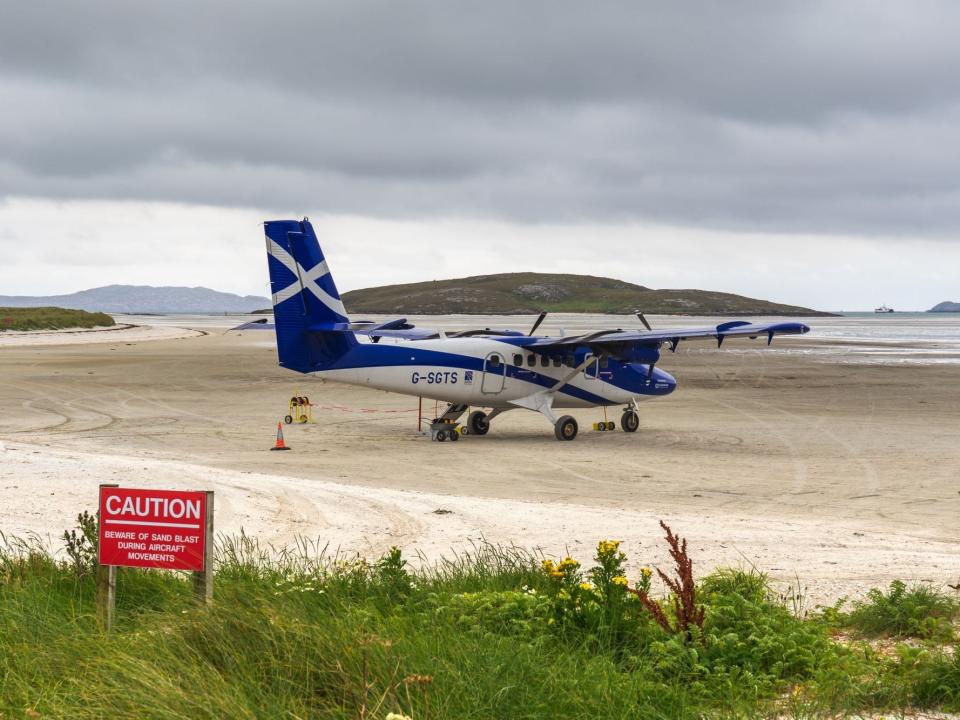
Barra Airport is located on a tiny island off the west coast of Scotland in an area known as The Isles of Barra and Vatersay. Due to the remote territory and low demand, the airport only has a control tower and a small terminal but there is no space for an actual runway.
Instead, airplanes land on three triangle sand strips located along the water at Traigh Mhor, allowing planes to land in any direction depending on the winds.
Barra Airport is actually the only airport with scheduled flights where planes land on sand — but it makes flying there extremely difficult.
According to Forbes, the runways are only five feet above sea level and completely vanish at high tide, so pilots must be alert to unexpected weather and changing tide conditions.
Fortunately for pilots and passengers, the airport has safety procedures to help tackle the unusual terrain.
In July, Barra Airport flight information officer Joyce Beverstock told CNN that there are "beach inspections" before every flight and security patrols that keep people from venturing out onto the runways.
Loganair is the only airline that regularly serves Barra, with flights from Glasgow, Scotland, using the rugged de Havilland Canada DHC-6 Twin Otter, a Canadian-made aircraft specially designed for challenging terrain and short runways.
Paro International Airport in Bhutan
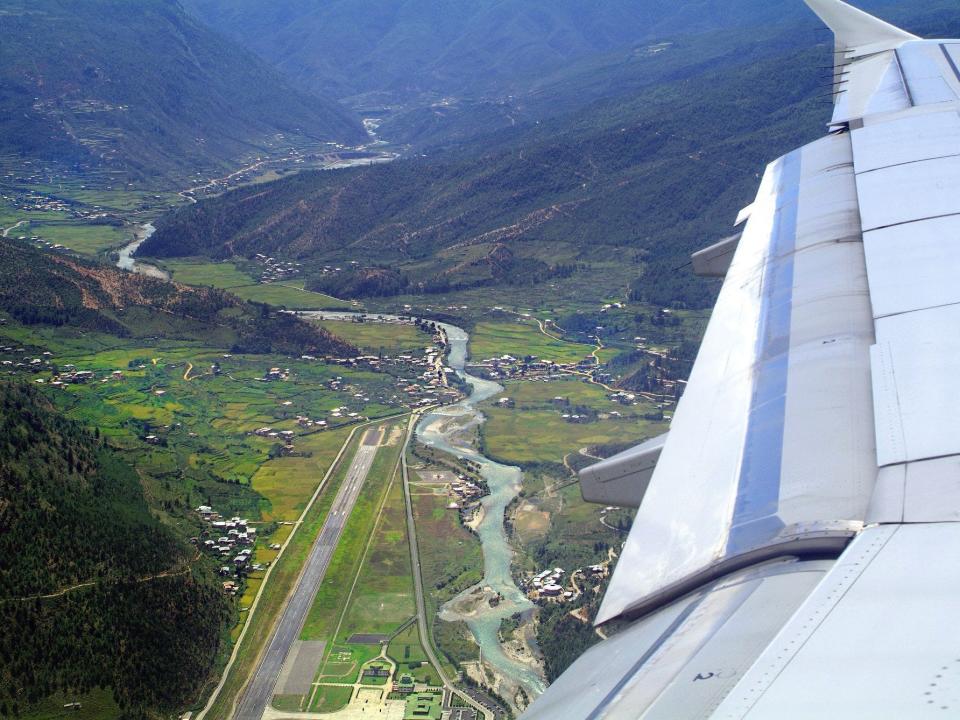
Bhutan's Paro International Airport is one of the most geographically complicated airports in the world.
Located in a valley between 18,000-foot peaks and dense forest trees, only a few dozen pilots have been specially trained to fly in and out, and flights are only allowed during daytime hours.
According to Forbes, a few factors make the approach particularly dangerous, including the steep 45-degree turn into the runway — which the pilots can't even see until moments before dropping onto the airfield.
The runway is also very short at just 6,500 feet, meaning the narrowbody planes flying to and from the airport must operate within very strict speed and altitude parameters.
Moreover, the airport lacks helpful radar systems that could help guide the planes in, so aviators must rely on their eyes and training.
Currently, only two carriers fly to Paro Airport: state-owned flag carrier Drukair Royal Bhutan Airlines and privately-owned Bhutan Airlines, both flying Airbus A319s.
Juancho E Yrausquin Airport in the Dutch Caribbean
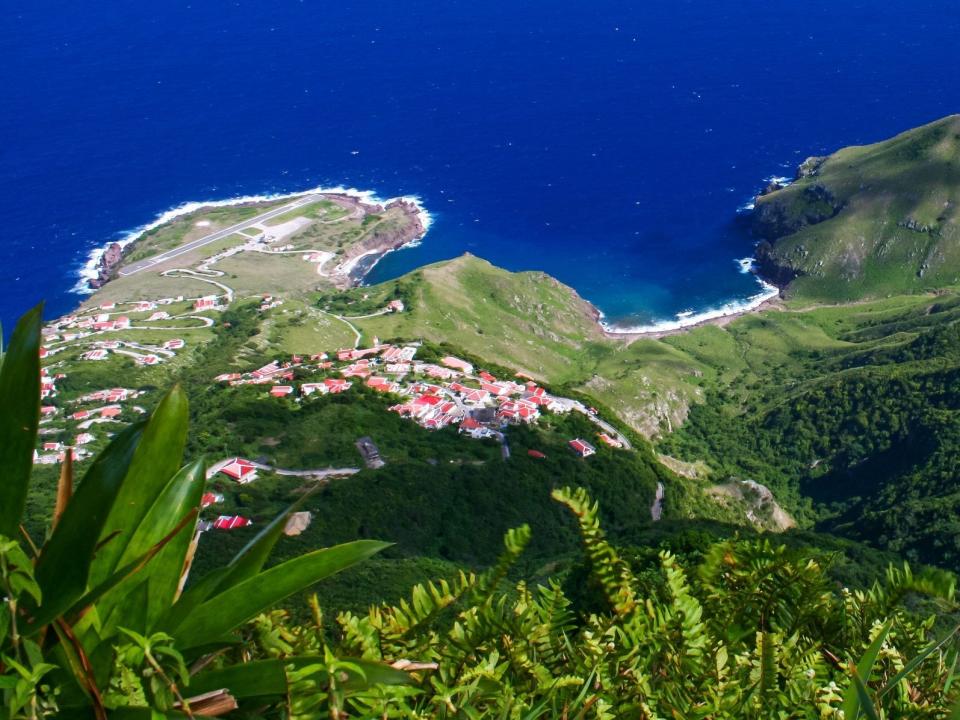
The world's shortest commercial runway is on the Dutch Caribbean island of Saba, which is located east of the US Virgin Islands and south of Anguilla.
With just five square miles of space to work with and few flat areas, the airport's asphalt landing strip only stretches about one-fourth of a mile at a mere 1,300 feet long.
The short runway paired with mountain cliffs means the margin for error is extremely narrow, and pilot precision is key to preventing the aircraft from nose-diving off the end of the runway and into the ocean.
Similar to Paro Airport, just a select number of aviators are trained to fly in and out of Saba. The only airline with scheduled flights is Sint Maarten-based Winair using a de Havilland Canada DHC-6 Twin Otter.
Winair fleet instructor Captain Roger Hodge told CNN in July 2022 that flying into Saba is extremely challenging, and "adrenaline" can kick in.
"Flying into Saba gets kind of hairy sometimes, but by knowing what to do, we make it look simple and calm," he said.
Courchevel International Airport in the French Alps
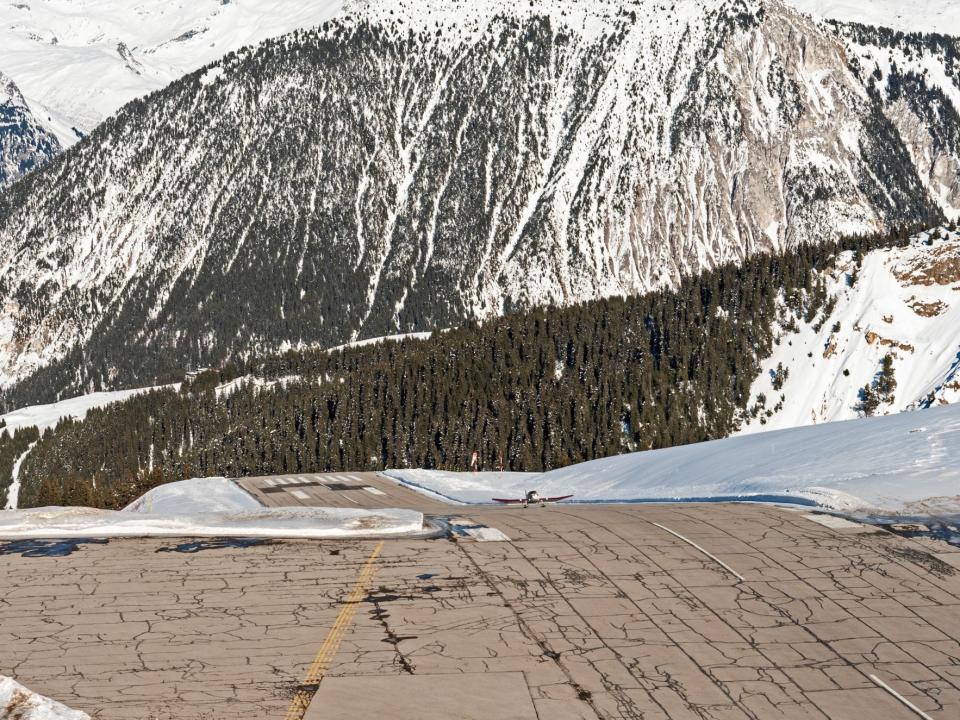
Courchevel International Airport in the French Alps provides access to one of the world's most luxurious ski destinations, but only specially trained pilots can tackle the airport's awkward downhill slope and short 1,700-foot runway.
The strip's 18.5% downward gradient is a particularly challenging factor, according to Forbes, meaning pilots must maneuver perfectly.
Plus, the unforgiving landscape paired with the airport's lack of lights or guidance systems means flights are only possible in clear weather conditions — wind and storms would make flying in or out too risky.
The only scheduled air carrier flying to the airport is France's Alpine Airlines, which uses a Vulcanair P68 Turbo Observer aircraft built for short-field performance. However, private jets and helicopters also use the risky landing strip.
Toncontin International Airport in Honduras
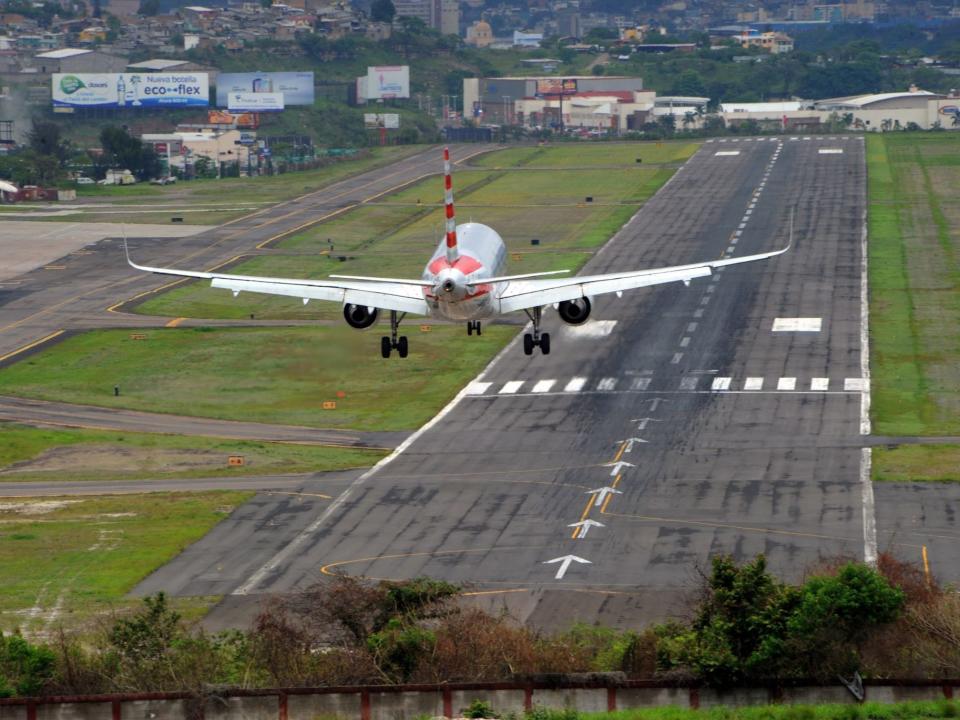
To reach Honduras' capital city of Tegucigalpa, pilots must first maneuver through mountainous terrain before making a sharp turn and steep descent into the Toncontin International Airport — similar to the conditions in Bhutan.
The treacherous conditions are made even more difficult by the short 7,100-foot runway, with the biggest concern being the risk of jets overshooting the runway.
This actually happened in 2008 when a TACA Airlines Airbus A320 skidded off the runway and into a street, killing three people onboard — including the captain — and two people on the ground.
However, some concerns at the airport have been remedied with the opening of the new Palmerola International Airport in 2021. Only domestic flights now operate at Toncontin with all international flights going through the safer Palmerola, which has a 9,200-foot runway.
Princess Juliana International Airport in St. Maarten
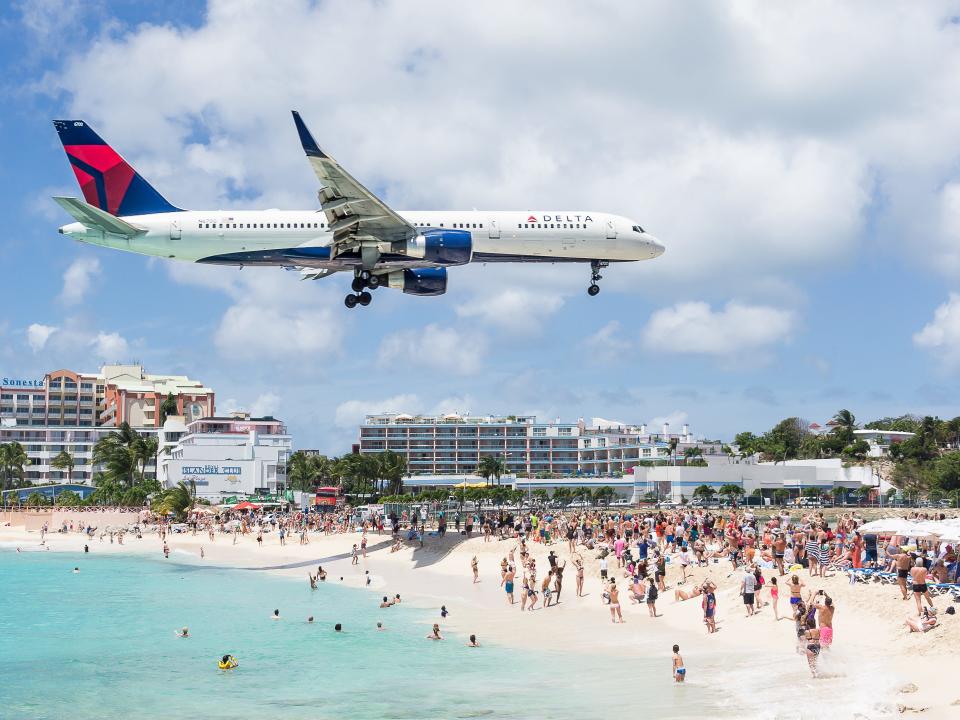
Probably the most famous airport on this list is Princess Juliana International Airport on the Caribbean island of Sint Maarten, mostly due to its scenic approach that flies directly over a public beach.
Tourists and planespotters alike are known to line the airport fence waiting for huge jetliners to take off and land overhead, though the activity can be dangerous with people being knocked off their feet — and even killed — due to the jet engine blasts.
Aircraft landing at Princess Juliana are not only dangerous for those on the ground, but the 7,100-foot runway and low approach push larger commercial aircraft to their operating limit.
But, airlines seem to be managing as planes as big as the massive Boeing 747 have visited Sint Maartan's airport.
Tenzing-Hillary Airport (Lukla Airport) in Nepal

Officially named Tenzing-Hillary Airport, Lukla is the gateway to Mt. Everest with hundreds of climbers traveling through the airport on their way to and from base camp.
Lukla is like the Rainbow Road of flying, but pilots have to zig-zag between peaks — one of them being the world's tallest mountain — while simultaneously trying to navigate down to a mere 1,700-foot, one-way airstrip. And, the airport has minimal infrastructure to assist.
Maintaining speed and altitude is key to safety, and there is little to no room for error due to the steep incline required for takeoff and the unpredictable weather that could see sunny skies turn to zero visibility in a matter of minutes — meaning it's hit-or-miss if the flight will actually depart as scheduled.
Plus, the airport is situated at an altitude of about 10,000 feet where air is less dense. This can impact aircraft performance and it make it more difficult for pilots to control their plane.
The airport is no stranger to disaster, either. According to the Aviation Safety Network, 56 people have died on flights arriving, departing, or near Lukla since 2004.
"Most runways are quite flat and are quite long, whereas [Lukla] is on a hillside," former Lukla pilot Jimbo Burgess told CNN in August, noting the incline is a 30 or 40-degree slope. "The mountain is literally right at the other end of the airport, and the weather can change so quickly."
Read the original article on Insider
